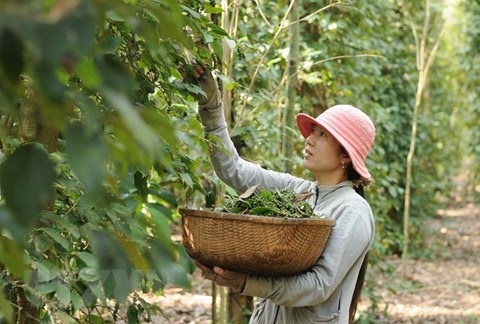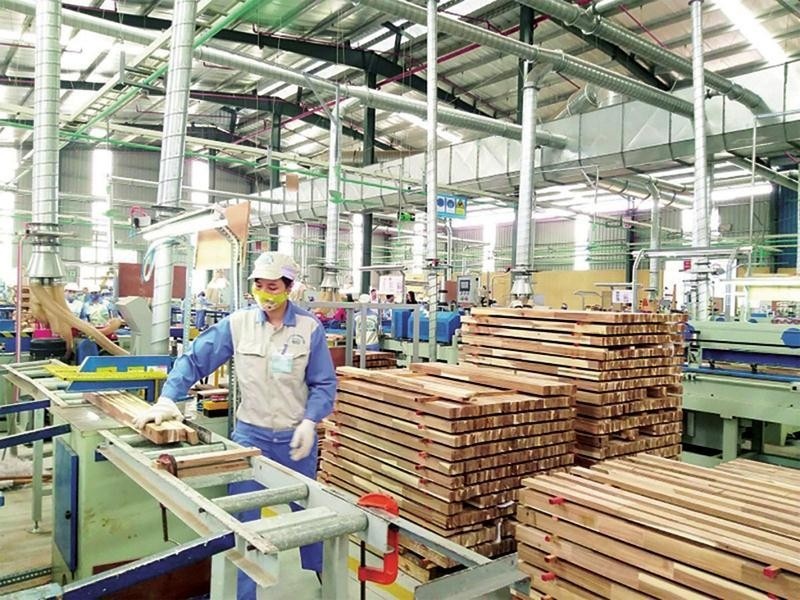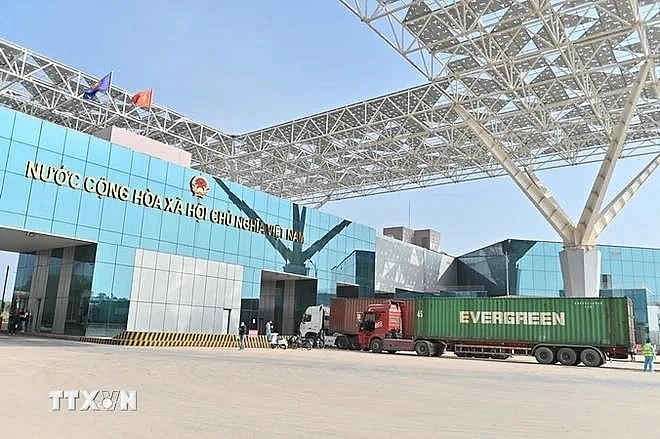Vietnamese products struggle to maintain global e-commerce presence
Vietnamese products struggle to maintain global e-commerce presence
International shipping has become more accessible, but challenges like inefficient payment systems and limited support for international logistics are a major headache for Vietnamese business owners when it comes to e-commerce.

Vietnamese companies find success in local live-streaming sales, but dream of growing internationally. Picture: N. Binh / Tuoi Tre |
While foreign retailers can easily enter e-commerce platforms to sell to Vietnamese consumers, Vietnamese companies face far more hurdles when trying to do the same abroad.
As globalization reshapes commerce, local businesses and vendors are struggling to establish a solid foothold in the global market.
The logistics challenge
Han, a business owner from Ho Chi Minh City who began selling on Amazon in 2011, emphasizes the importance of selecting a reliable shipping provider and understanding the delivery system to penetrate the U.S. market.
“My team and I had to teach ourselves how to navigate the software of delivery companies in the U.S. through online resources,” she recalls.
With time and networking through friends and family, Han's team developed a cost-effective transportation solution tailored for their products.
However, they faced significant hurdles due to the nature of e-commerce shipping.
Most packages are lightweight, making it difficult to find logistics providers that offer competitive rates for shipments weighing between 50g and 100g.
Major delivery firms like UPS, FedEx, and DHL impose a minimum weight limit of 0.5 kg, which is not conducive to e-commerce needs.
Vietnam Post services are not fully digitalized, leading to high risks of lost or failed deliveries.
Shipping times further complicate matters.
Han notes that when she first started selling on Amazon, customers accepted delivery times of 14 21 days for items shipped from abroad.
However, with fierce competition from Chinese vendors who can deliver within 3-7 days, Vietnamese products struggle to compete.
“If we continue delivering within that time frame, our competitiveness diminishes significantly,” she explains. “Faster delivery leads to higher customer satisfaction and repeat business.”
Logistical constraints have changed little in Vietnam in the past decade, making it challenging for Vietnamese businesses to export goods internationally with minimal support.
Many local vendors aspire to export their products but are confronted by significant logistical hurdles that hinder their ability to establish sales channels on international e-commerce platforms.
Do Thi Toan, owner of 'Yen Sao Do Thi Toan,' a popular brand on TikTok, shares her experience, “Selling Vietnamese goods abroad through e-commerce channels is not straightforward and remains quite ambiguous for local businesses."
Beyond ensuring product quality and compliance with international standards, sellers must also determine appropriate pricing and shipping times that align with customer expectations -- factors often beyond their control.
Export sector challenges
The struggles are not confined to small- and medium-sized enterprises; larger exporters in Vietnam also encounter difficulty in leveraging e-commerce for international outreach.
Consider N., a businessman from Quang Ngai Province who recognized the potential of utilizing locally-sourced areca palm leaves to produce bowls, spoons, and plates for export.
Despite investing in manufacturing equipment and production lines, N.'s efforts were hampered by logistical issues with his export partners.
Truong Van Cam, vice-chairman and general secretary of the Vietnam Textile and Apparel Association, spotlighted these challenges at the Cross-border E-commerce Forum 2024, co-hosted by Amazon Global Selling and the Vietnam E-commerce Association.
He notes that Vietnam's textile sector has long struggled with excessive reliance on export partners forgoing recognition from consumers.
Cam believes, “Vietnam has a competitive edge due to its direct production capabilities combined with technological skills and high-quality products valued by importers.”
There significant potential for Vietnamese textile companies to build their brands through cross-border e-commerce.
However, accessing highly competitive markets such as the United States or Europe still poses numerous challenges that require attention, particularly regarding transportation and distribution systems.
Two types of e-commerce players
In discussing the landscape of cross-border e-commerce in Vietnam, Gijae Seong, head of Amazon Global Selling Vietnam, identifies two primary categories of Vietnamese sellers.
The first group consists of online merchants, familiar with digital marketplaces and equipped with the necessary digital tools.
While they are responsive to market changes, they often lack long-term vision and product innovation.
Building a strong brand and sustainable business model poses significant challenges for this group.
The second group includes brand owners and traditional manufacturers who excel in production capacity but lack expertise in digital branding.
Their experience primarily lies within domestic markets using conventional methods.
For them, entering foreign online marketplaces like those in the U.S. or Europe requires innovative approaches to brand development and marketing strategies.
Despite the potential for Vietnamese products in global e-commerce markets, significant barriers hinder their success.
From logistical challenges to establishing effective branding strategies, local businesses must navigate a complex landscape if they are hoping to thrive internationally.
As Vietnam continues its journey toward greater integration into global trade networks, addressing these issues will be crucial for empowering local vendors and enhancing their competitiveness on the world stage.
With concerted efforts toward improving logistics infrastructure and fostering digital skills among businesses, Vietnam can carve out a more prominent place in the global e-commerce arena.



























